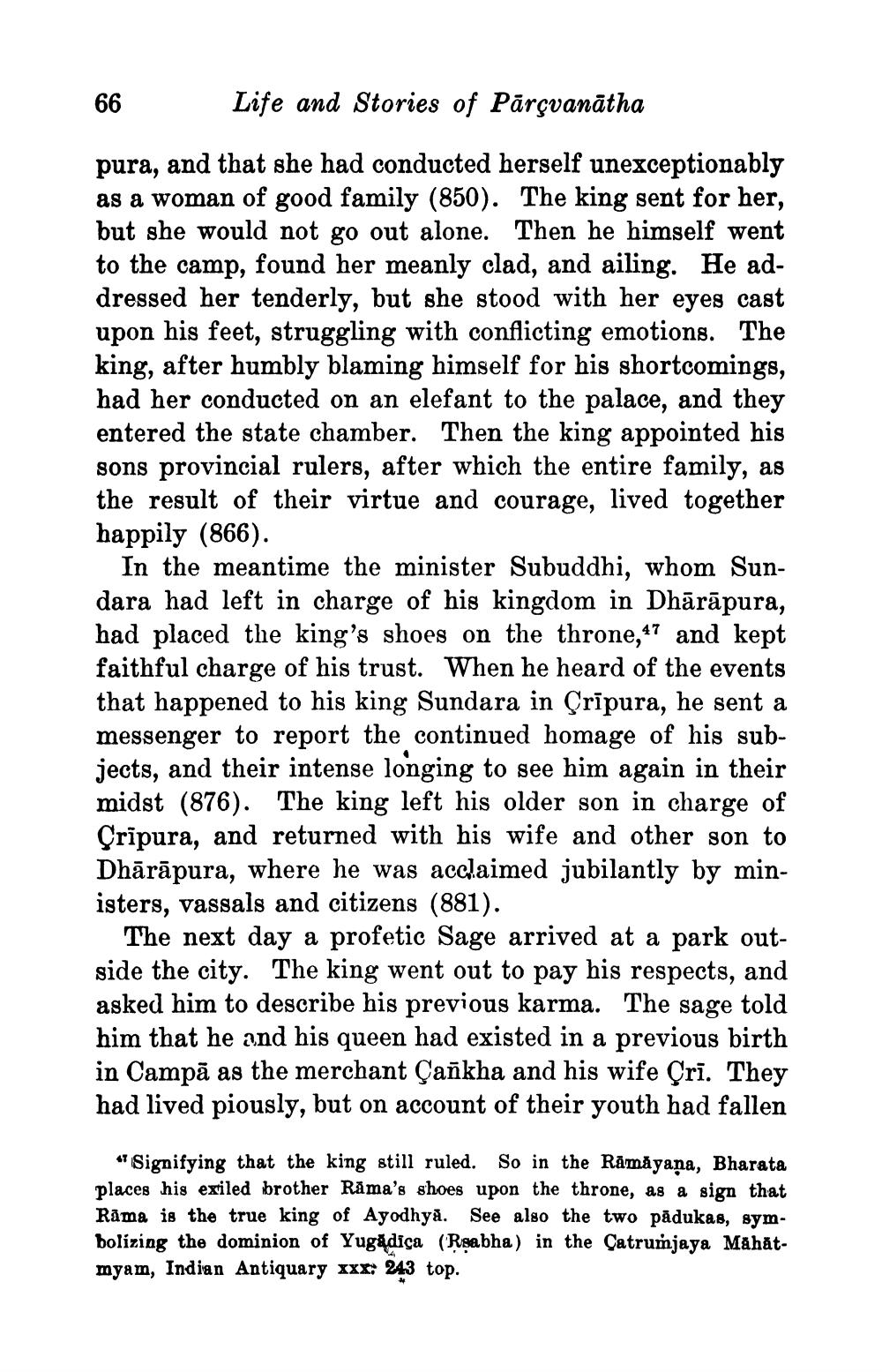________________
66
Life and Stories of Pārçvanātha
pura, and that she had conducted herself unexceptionably as a woman of good family (850). The king sent for her, but she would not go out alone. Then he himself went to the camp, found her meanly clad, and ailing. He addressed her tenderly, but she stood with her eyes cast upon his feet, struggling with conflicting emotions. The king, after humbly blaming himself for his shortcomings, had her conducted on an elefant to the palace, and they entered the state chamber. Then the king appointed his sons provincial rulers, after which the entire family, as the result of their virtue and courage, lived together happily (866).
In the meantime the minister Subuddhi, whom Sundara had left in charge of his kingdom in Dhārāpura, had placed the king's shoes on the throne, 47 and kept faithful charge of his trust. When he heard of the events that happened to his king Sundara in Crīpura, he sent a messenger to report the continued homage of his subjects, and their intense longing to see him again in their midst (876). The king left his older son in charge of Çrīpura, and returned with his wife and other son to Dhārāpura, where he was acclaimed jubilantly by ministers, vassals and citizens (881).
The next day a profetic Sage arrived at a park outside the city. The king went out to pay his respects, and asked him to describe his previous karma. The sage told him that he and his queen had existed in a previous birth in Campã as the merchant Çankha and his wife Çrī. They had lived piously, but on account of their youth had fallen
"Signifying that the king still ruled. So in the Rāmāyana, Bharata places his exiled brother Råma's shoes upon the throne, as a sign that Rāma is the true king of Ayodhyå. See also the two pădukas, symbolizing the dominion of Yug&dica (Rsabha) in the Çatrumjaya Mahătmyam, Indian Antiquary xxx: 243 top.




